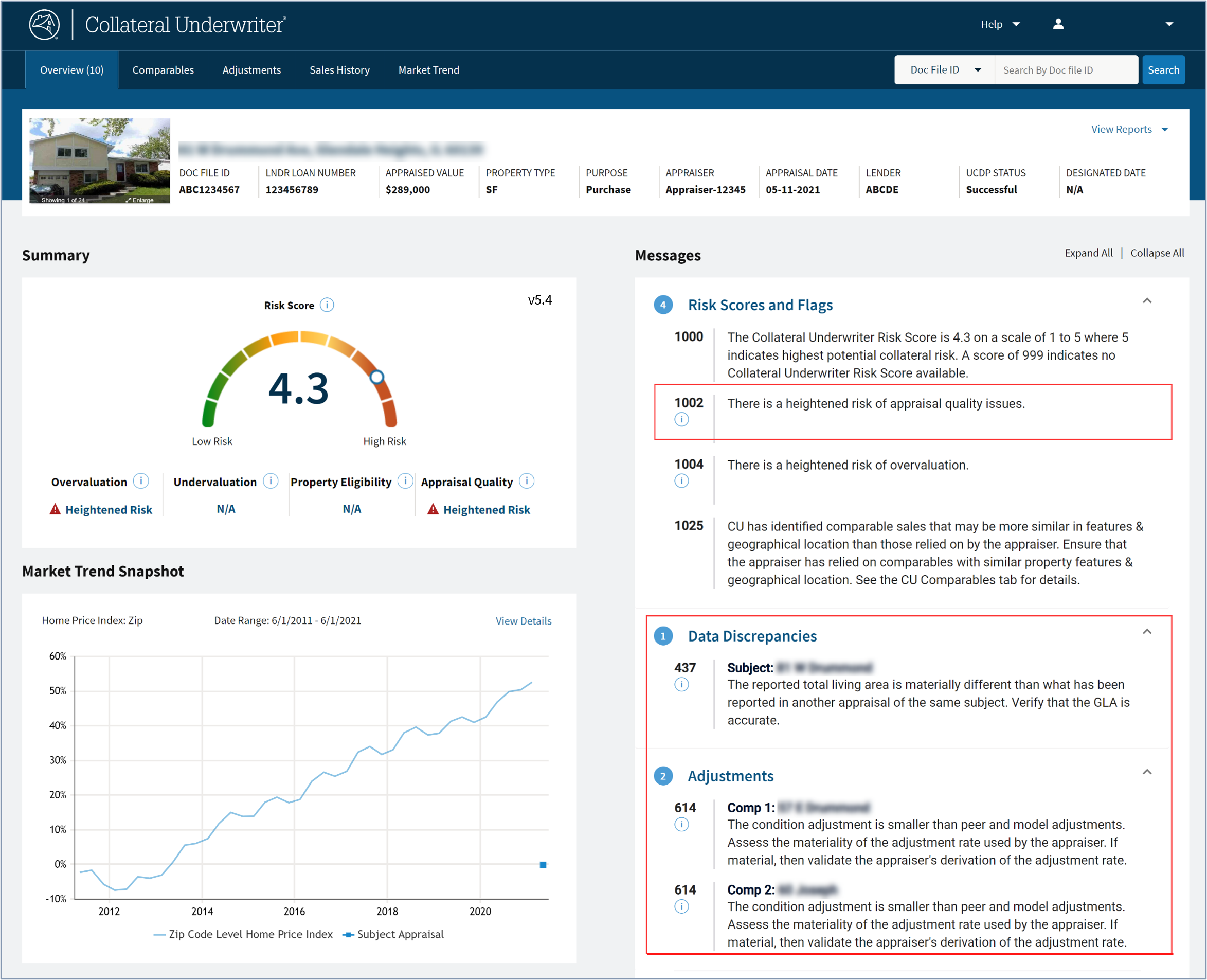My web
Appraisal Quality Flag
![]()
The Appraisal Quality flag focuses on the mechanics of the appraisal and the appraiser’s methodology. Collateral Underwriter's (CU) appraisal quality analysis and messaging is organized into four key categories: Data Integrity, Comparable Selection, Adjustments, and Reconciliation.

Comparable Selection
Comparable (Comp) Selection - CU contains a robust and up-to-date database of transaction data and property attributes collected through its repository of appraisals. This data generates pools of potential comparable transactions for any given subject. Much like an appraiser, CU derives and applies hedonic coefficients for time, distance, and physical similarity to rank order potential comparables by their overall similarity to the subject.
Note: CU scores the comparable selection as of the effective date of the appraisal. Sales transactions that take place after the effective date of the appraisal are not considered by the model.
The comparable selection model evaluates the appraiser-provided comparables against this rank-ordered pool of comparable sales - not against arbitrary guidelines. The Comparables Review tab displays and ranks the appraiser-provided comparables alongside the model-selected comparables. If the comparables selected by the appraiser are ranked substantially lower than the comparables selected by the model, CU will display a comp message.
Data Integrity
Data Integrity - The Data Discrepancy messages alert the user to potentially inaccurate data that may directly affect the appraisal results. Comparable sale transactions can appear in different reports by different appraisers or in different reports by the same appraiser. From multiple observations of the same comparable transaction, CU is able to analyze the reported property attributes and transaction terms for consistency across a single appraiser's body of work or relative to peers, then issue messages when data conflicts with prior observations.
The Data Discrepancy messages alert the user to potentially inaccurate data that may directly affect the appraisal results. Even if the inaccurate data does not directly impact the appraisal results, the messages can help identify underlying deficiencies in an appraiser's methodology.
Adjustments
Adjustments - CU uses the same county-level hedonic coefficients from the comparable selection model to derive market-specific adjustments for differences between subject and comparable attributes including time and location. The adjustment messages alert users to adjustments on the appraisal that are significantly different from the model-derived adjustments and from adjustments made by other appraisers in the same market.
Reconciliation
Reconciliation - CU examines the relationship between the appraiser’s opinion of value and the appraiser’s adjusted/unadjusted range of comparable sales prices. It performs a series of validations that look for anomalies in the various reconciliations made by the appraiser. Reconciliation messages alert the user to potentially unsupported reconciliations.